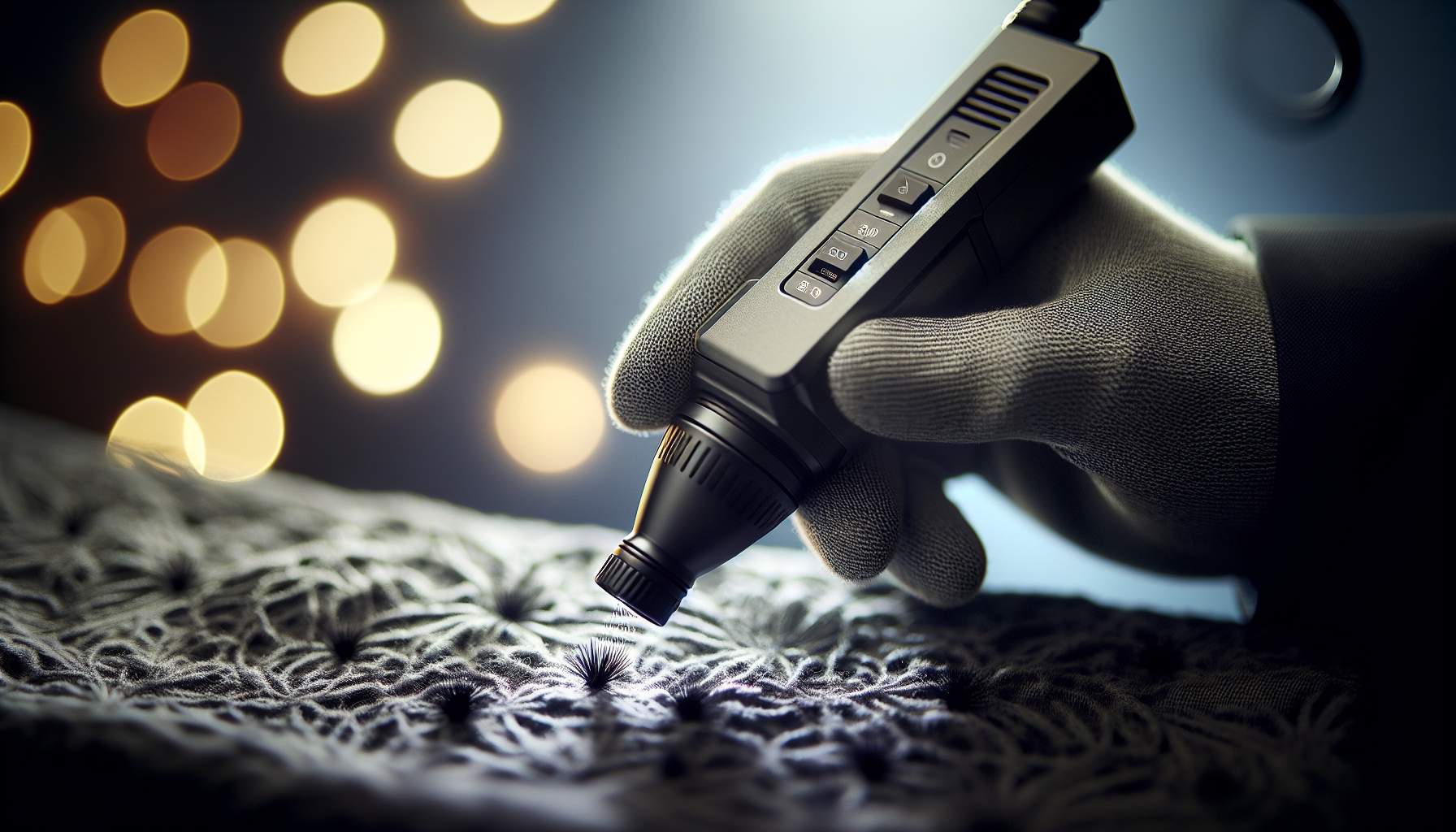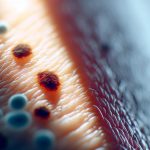In an enlightening discussion, Jared Bradley, the head honcho of M-Vac Systems, shared the captivating origins and significant impact of their innovative vacuum device. Designed with precision, this gadget is a game-changer in collecting DNA from challenging surfaces like fabrics or rough materials. This technology has breathed new life into stale or misunderstood criminal investigations by uncovering vital clues that were once elusive.
Bradley’s narrative doesn’t just stop at the inception; it dives deep into how M-Vac has become an indispensable tool in forensic science. The ability to extract even the smallest traces of genetic material can tip scales in cases hanging by a thread, helping law enforcement close chapters that seemed destined to remain unresolved.
What makes Bradley’s story stand out isn’t just the technological marvel he represents but also the profound implications it carries for justice and closure for affected families and communities. By pushing boundaries and embracing innovation, M-Vac Systems underscores its commitment to enhancing investigative processes and contributing to a future where no case goes unsolved due to lack of evidence.
The Origin and Development of the M-Vac: A Brief Overview
Hailing from the quaint town of Jerome in Idaho, known for its robust dairy sector and a population that barely scratches 6000, my childhood was steeped in the essence of small-town America. My father, an esteemed scholar with a doctorate in microbiology and animal sciences, ran a modest lab there. His work primarily supported the local beef and dairy industries. The year 1993 marked a pivotal moment when an E Coli outbreak linked to fast-food burgers wreaked havoc along the west coast, claiming six young lives and sending scores more to hospitals. This tragedy deeply impacted my dad, propelling him towards investigating the lapse in safety measures.
Despite the availability of advanced technology such as PCR devices capable of identifying bacteria once samples were processed, he identified a critical gap at the stage of sample collection. Traditional methods relied on swabs or sponges which merely skimmed surfaces without delving into deeper recesses where bacteria often lurk undetected.
Inspired by this realization, my father conceptualized M-Vac, a revolutionary wet-vacuum system designed to probe those hard-to-reach areas much like how carpet cleaners extract dirt from deep within fibers — far outperforming conventional brooms that only clear surface layers. This innovation proved effective not only against bacteria but also spores like Anthrax, various viruses, and DNA material.
While my path diverged significantly from my origins in Jerome — joining the Army National Guard after high school followed by college studies abroad and stateside before venturing into sales roles including an extensive stint within pharmaceuticals — I eventually found myself drawn back into my father’s orbit as he perfected M-Vac. After years of dedication supplemented with grants for research and development from prestigious institutions like NIH and DoD, he was ready to introduce his invention to market by 2007 initially targeting food industry applications.
Although we soon realized that our product didn’t exactly align with our initial customer base’s needs, it nonetheless stood as testimony to innovation born out of necessity; transforming adversity into opportunity through sheer perseverance and scientific ingenuity.
Understanding the Functioning of the M-Vac System
The analogy of the carpet cleaner sheds light on a groundbreaking technique used for gathering cellular material such as skin cells, saliva, or blood. This method isn’t only about its efficiency; it fundamentally transforms how samples are collected. At the heart of this process is a device that disperses a cleaning solution directly at the center while simultaneously applying vacuum pressure from the edges. This action creates a powerful force akin to a mini hurricane, effectively pulling in the desired samples.
In practical terms, this approach has proven significantly superior to traditional methods. For instance, tests conducted by the FBI demonstrate that this method can retrieve up to 46 times more DNA from previously swabbed areas than conventional swabbing could achieve. On average, an increase by 12 times was noted across different surfaces and substances being tested in these FBI studies. The success lies not just in physical scrubbing but in how the solution interacts with vacuum pressure to stir up and capture cellular materials.
This breakthrough indicates a major advancement in forensic science and evidence collection techniques, offering much higher precision and efficiency in retrieving biological materials from crime scenes or other investigation areas.
How does your product influence the investigative process?
The introduction of the M-Vac system has revolutionized how investigations dealing with DNA evidence are conducted. Traditionally, when a visible stain such as blood or semen was present, detectives could easily collect samples using simple tools like swabs or spoons. The abundance of DNA in these samples made the process straightforward. However, challenges arose when the stains were not visible to the naked eye or if initial collection methods failed to yield results.
This is where the M-Vac becomes invaluable. Its ability to collect DNA material that eludes other collection methods offers investigators a fresh avenue for gathering evidence. Even after traditional swabbing techniques are employed, a significant amount of DNA often remains on surfaces; the M-Vac can capture this residual material effectively.
Before this technology was available, detectives had limited options for collecting evidence from difficult surfaces or materials like fabric. They relied on less effective methods that only skimmed the surface or involved cutting out pieces of materials.
Having access to M-Vac gives investigative teams another chance at cracking cases that would otherwise remain unsolved due to insufficient DNA evidence. It’s an exciting development for law enforcement professionals who see it as gaining an additional lead when all others have been exhausted.
How did the M-Vac change the course of an investigation?

In the heart of winter in 1996, a tragic tale unfolded near the Provo River in Midway, Utah. A 17-year-old girl, caught up in a life of hardship involving drugs and prostitution, met a gruesome end. Her lifeless form was discovered bare and exposed to the chilling embrace of an unforgiving night where temperatures plummeted to minus 12 Celsius. The scene suggested she had been fleeing in terror along a secluded service road before being mercilessly attacked.
The evidence at the crime scene painted a grim picture. The assailant had used sharp granite rocks as weapons, leaving behind a bloody tableau that hinted at the viciousness of the assault. Despite multiple attempts over years to extract useful evidence from these rocks, their porous nature thwarted every effort until the case grew cold.
However, breakthrough came two decades later with the advent of M-Vac, an innovative wet-vacuum system capable of extracting minuscule amounts of DNA material. Turning to this technology after 18 years on ice yielded results beyond expectations; investigators secured 21 nanograms of DNA—far surpassing what was required for profiling.
This turn of events breathed new life into an investigation that had hit a standstill. Without any leads or witnesses, hope for solving this case was fading fast until M-Vac offered a beacon of light. This case exemplifies how advancements in forensic science can pivotally impact criminal investigations worldwide, offering closure where there once seemed none.
Why isn’t the M-Vac commonly used by police?
Discovering why the M-Vac system hasn’t become a staple in all major law enforcement agencies is a puzzle that has been pondering for nearly a decade. In places like Broward County, the importance of this tool cannot be overstated. It’s not always front and center at crime scenes, but when it’s needed, it becomes indispensable, especially in solving grave crimes such as homicides.
One would think that with the strong endorsement from users and its proven effectiveness, adoption would be widespread. Yet, despite these glowing recommendations, the M-Vac remains relatively scarce on a global scale. There are merely a few hundred units across the globe. However, recent validation from FBI data has begun to bolster its reputation significantly.
Nonetheless, introducing new technologies into the forensic field is notoriously slow. This sluggish pace means gaining momentum for cutting-edge solutions like the M-Vac takes time—time during which potential crimes could go unsolved or justice delayed for victims and their families.
The road ahead involves heavy lifting: spreading awareness and demonstrating unequivocally what this technology can achieve. The ultimate goal? To make M-Vac systems an essential part of every significant law enforcement agency’s toolkit worldwide.
What current trends or technologies in your field do you find intriguing?
In the fascinating world of forensic DNA analysis, three pivotal steps stand out: collection, processing, and interpretation. At the heart of collection lies the innovative M-Vac system, a tool that significantly enhances the gathering of DNA evidence. The processing phase has witnessed groundbreaking advancements with scientists now exploring SNP analysis over the traditional STR method. This shift opens up new possibilities in examining different segments of DNA.
A remarkable revelation comes from an interview on « All Things Crime » with David Middleman, CEO of Othram Inc., whose expertise in DNA is unparalleled. His laboratory’s focus on analyzing 10,000 markers—far beyond the standard 20—dramatically improves individual identification accuracy within moments.
Moreover, genealogical research has proven to be a game-changer in solving cold cases. By constructing family trees and identifying relatives of suspects through their DNA, law enforcement agencies have managed to apprehend elusive criminals like the Golden State Killer.
Another noteworthy technology reshaping forensic science is probabilistic genotyping. This technique employs algorithms to analyze DNA profiles more accurately than human interpretation alone could achieve. Used alongside technologies like M-Vac, it significantly enhances the probability of correctly identifying individuals from collected samples.
Laboratories are continually striving for higher sensitivity in testing methods to detect smaller quantities of DNA material effectively. With innovations such as M-Vac providing more comprehensive samples and probabilistic genotyping refining data analysis, forensic investigations are becoming increasingly efficient and successful.
These advancements underscore a major evolution in forensic science—an evolution that not only broadens our understanding but also strengthens our ability to serve justice reliably and swiftly.
What do you intend to do next with M-Vac?
The field of forensics is undergoing rapid transformation, especially in the realm of DNA technology. At the heart of this evolution, our enthusiasm propels us forward as we explore groundbreaking advancements. While contemplating partnerships with major forensic corporations to enhance the reach and effectiveness of the M-Vac system remains on our agenda, our primary focus continues to be on innovation and progress.
Current circumstances have shifted many traditional interactions online due to the inability to attend conferences in person. To stay connected and share updates, we’ve taken to digital platforms vigorously. Our main channel for communication has become LinkedIn—a hub where we engage with our audience directly. I encourage everyone interested to join me there for a more personal interaction where you can ask questions freely.
Additionally, don’t miss out on subscribing to our videocast titled ‘All Things Crime’. It’s a treasure trove of fascinating discussions featuring interviews that delve deep into various facets of forensics, including but not limited to the M-Vac system, law enforcement practices, and investigative techniques.




















